NewAir NAC14KWH02 Review
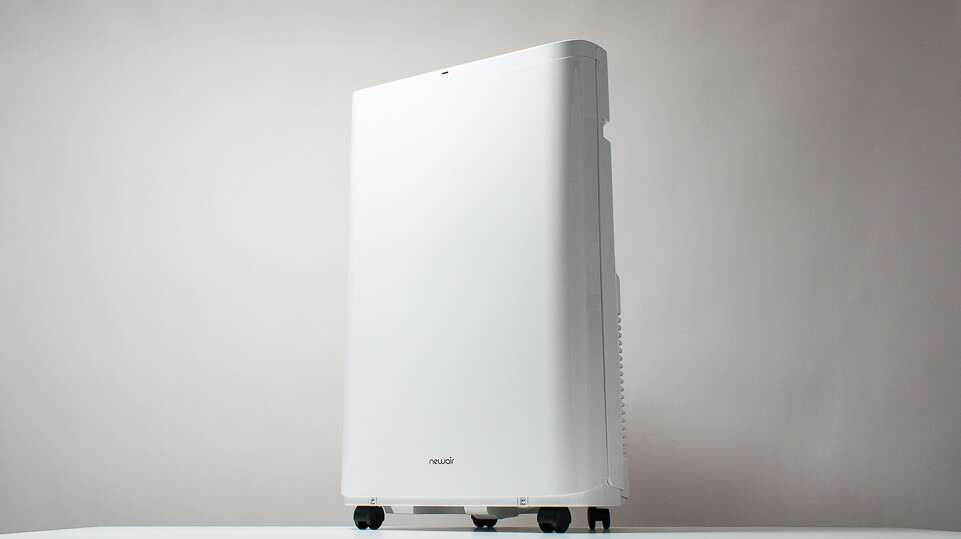
Initial Analysis
Cooling Capacity
Under the previous standard for measuring cooling capacity, the NewAir NAC14KWH02 has a cooling capacity of 14,000 BTUs.
Under the new standard – seasonally adjusted cooling capacity (SACC) – its capacity drops down to only 9,500 BTUs.*
Why?
Because the new standard takes into account two major inefficiencies that the old standard does not account for. Those inefficiencies are:
- heat added by warm exhaust air traveling through the unit’s ducting
- heat added to the conditioned room by infiltration air
Infiltration air is hot outdoor air that gets pulled into the room through air gaps. It gets pulled into the room because of pressure differences between the conditioned room and the outdoors.
As the portable AC unit exhausts warm air it creates an area of low pressure inside the room. Outdoor air is at a higher pressure, comparatively. This pressure difference causes hot outdoor air to want to get pulled into the conditioned room through any air gaps it can find. These air gaps are usually located in and around the window bracket that feeds the exhaust air through one of the room’s windows.
In any case, SACC takes into account these two inefficiencies and subtracts the heat added by these inefficiencies from the overall cooling capacity. Thus, SACC is much more representative of the actual cooling capacity than the old standard ever was.

Important Notes
This particular review was written several years ago. As such, certain models referenced in this review may no longer be available and/or the specific models we recommend may have changed (see our general portable AC buyer's guide for our latest recommendations).
In addition, certain models have improved efficiency since we tested them (and wrote this review). For example, the NAC14KWH02 we tested had a SACC of 9,500 BTUs. The latest version of this model now has a SACC of 10,000 BTUs. The Whynter ARC-14S we tested had a SACC of 8,900 BTUs. The latest version now has a SACC of 9,500 BTUs.
The NewAir has a surprising high SACC
Although the drop from 14,000 BTUs (old standard) to 9,500 BTUs (new standard – SACC) is substantial, it’s far from worst in the 14,000 BTU category. In fact, at the time of this review, it’s second best in the category.
The most efficient 14,000 BTU portable AC unit is the LG LP1419IVSM with a SACC of 10,000 BTUs. The NewAir is second in the category at 9,500 BTUs.
Even the Whynter ARC-14S, a dual hose unit that you would expect to be more efficient than single hose units like the LG and Newair, has a SACC of only 8,900 BTUs.
The worst performers in the category have a SACC of only 7,500 BTUs – almost half of the originally claimed 14,000 BTUs.
The NewAir in our testing
In our testing, 9,000+ BTU (SACC) units like the LG LP1419IVSM and NewAir NAC14KWH02 exhibited a quantum leap in performance compared to sub 9,000 BTU (SACC) units.
They cooled the test environment – a 150 sq. ft. room – much faster and to much lower temperatures during the 2 hour test.
With a starting room and outdoor temperature of 90° F, 9,000+ BTU (SACC) units cooled the room by 15° F (down to 75° F) in approx. 30 minutes and were able to cool the room all the way past 72° F by the end of the test (after approx. 2 hours) Sub 9,000 BTU (SACC) units took approx. 2 hours just to cool the room by 15° F.
This is more than a substantial difference in performance – a “quantum leap” as we like to call it - and all of this in only a 150 sq. ft. room.
We’ll have more on the implications of this testing in this review’s conclusion.
Energy Efficiency
The NewAir NAC14KWH02 draws 1350 watts of power operating at maximum cooling capacity (as it was for our tests).
For comparison, the LG LP1419IVSM draws 1370 watts.
Both the Honeywell HL14CESWB and MM14CCS are some of the least power hungry 14,000 BTU units on the market, each drawing only 1200 watts. Then again, both units have a much lower SACC than the LG and NewAir. The HL14CESWB’s SACC is 8,500 BTUs and the MM14CCS’s SACC is only 7,500 BTUs.
The question though, is which models are the most energy efficient?
To determine energy efficiency we could simply use BTUs/watts.
But which BTUs?
Clearly, the best option is to use BTUs according to the new standard - SACC. Why? Because it accounts for major cooling inefficiencies – and those greatly affect energy efficiency as well.
Doing so for the NewAir NAC14KWH02 we get
9,500/1350 = 7.04
For the Honeywell HL14CESWB we get
8,500/1200 = 7.08
For the Honeywell MM14CCS, the ratio is only 6.25.
The best ratio in the 14,000 BTU category belongs to the LG LP1419IVSM at 7.3. The NewAir is not too far off at 7.04.
We therefore feel confident saying it’s among one of the more energy efficient 14,000 BTU units on the market.
Pros and Cons
Pros
- Terrific cooling performance – second highest SACC currently on market at 9,500 BTUs
- High SACC results in high energy efficiency – the numerator in the ratio we use to determine energy efficiency – SACC/watts – is SACC. And the higher the numerator, the greater the energy efficiency - assuming of course that watts are comparable, which they are in the 14,000 BTU category (most units fall within a similar range of watts and those that draw less watts have lower SACC).
- High BTU/SACC = high pints/day (117) in dry mode for the category (14,000 BTUs) and overall
Cons
- Limited drainage options – no continuous drain option in dry mode where you can a connect garden hose
- Window kit lackluster - window kit min length is higher than most, maximum length is less than that of other top rated units like the LG LP1419IVSM, toolless adjustment but let's in air (more on this later), no weather stripping included
- Durability concerns - no air filter for condenser is a bit of a concern and toolless switch could break but not bad compared to average
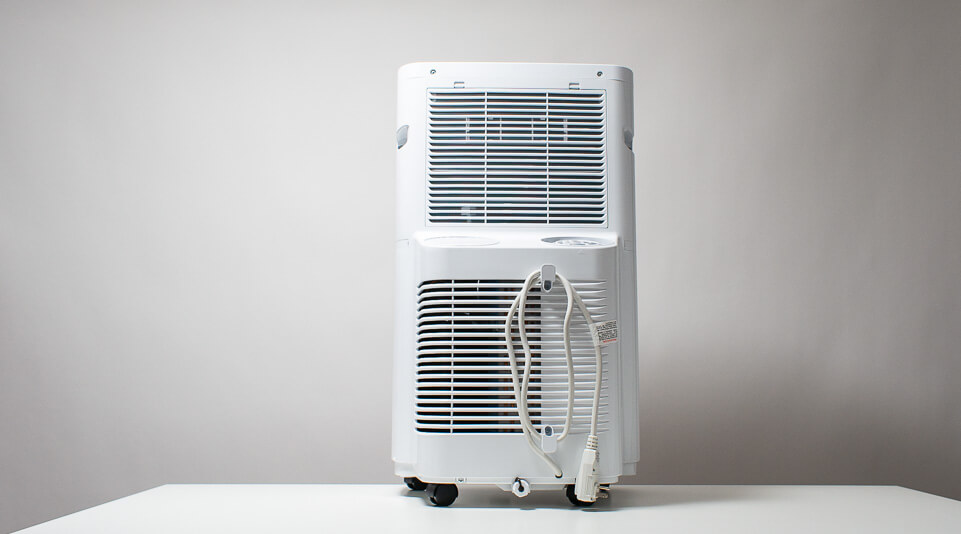
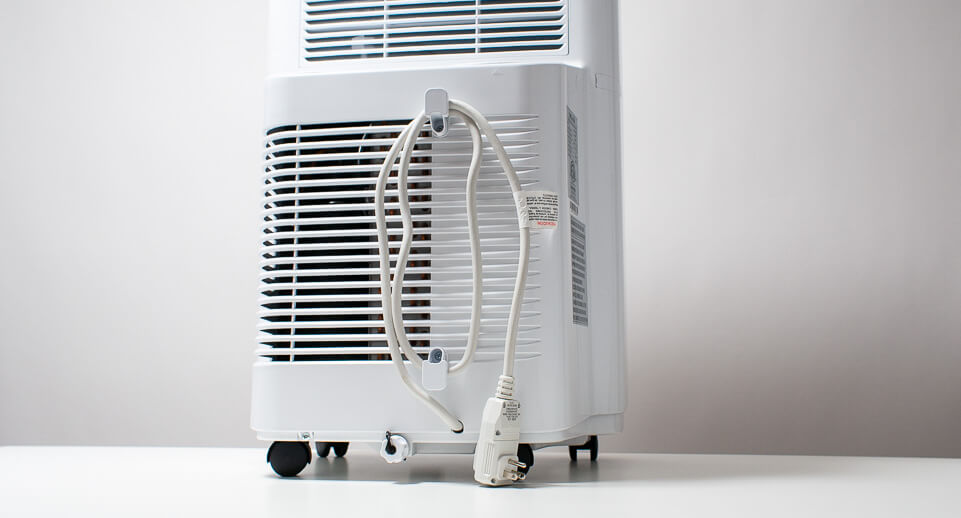
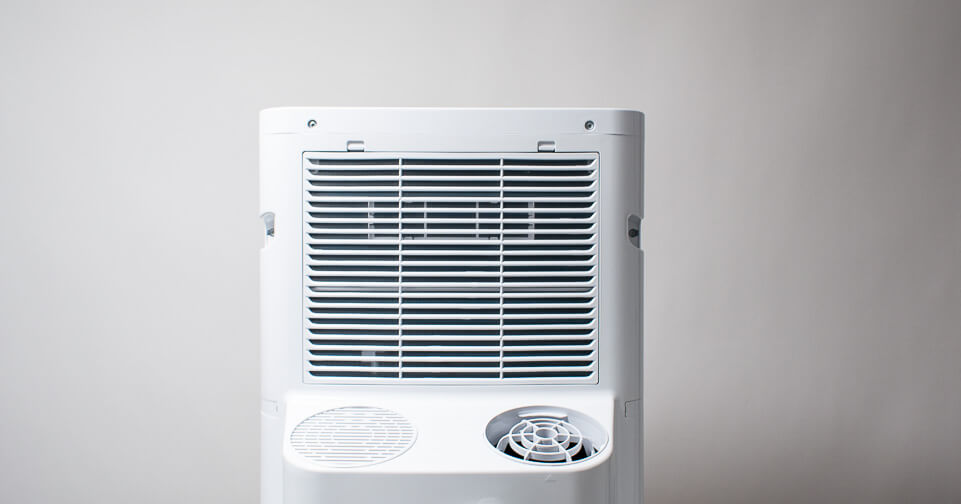
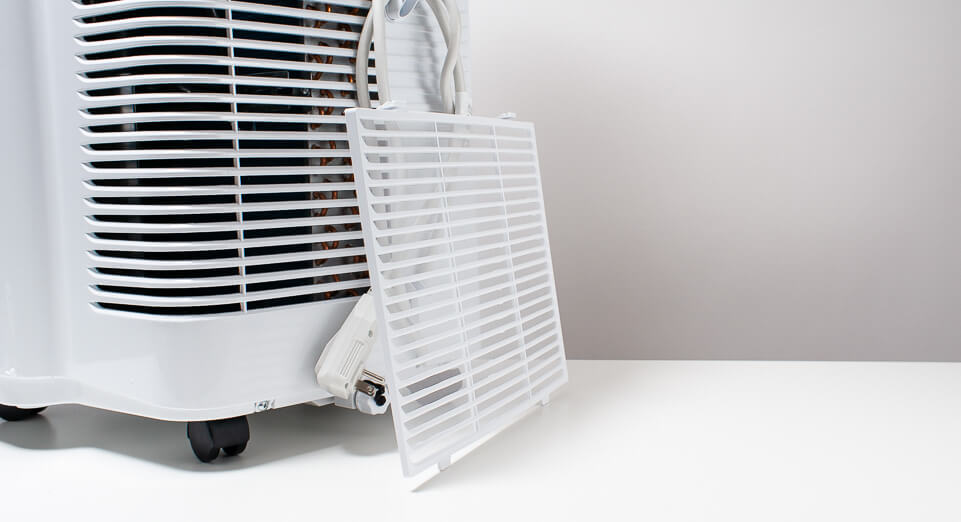
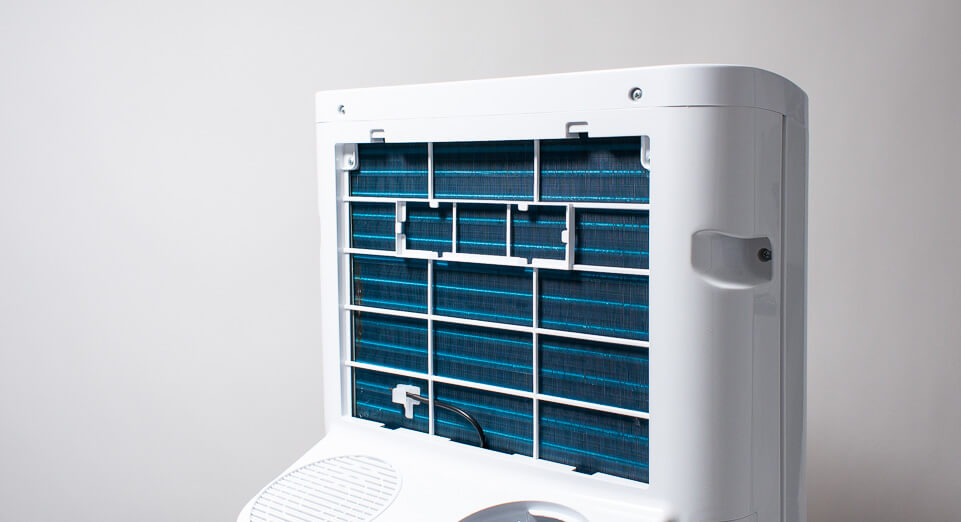
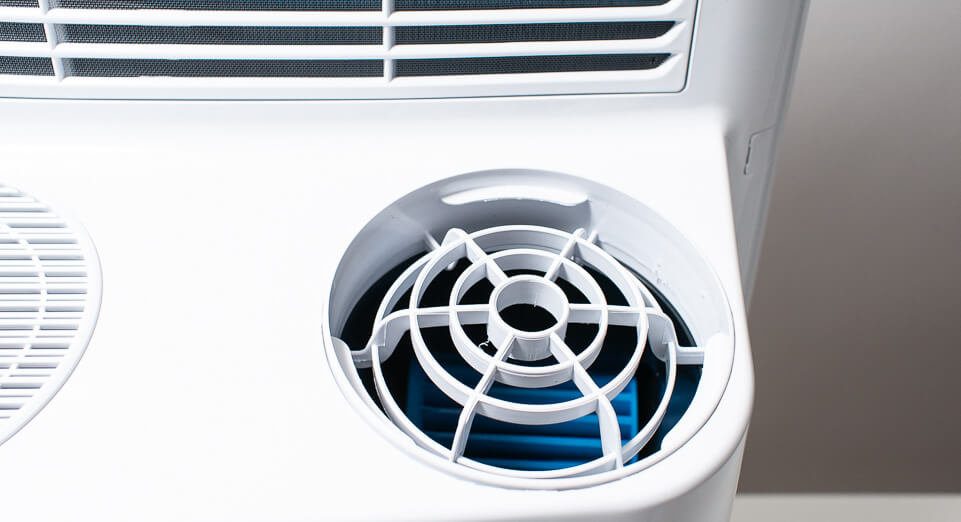
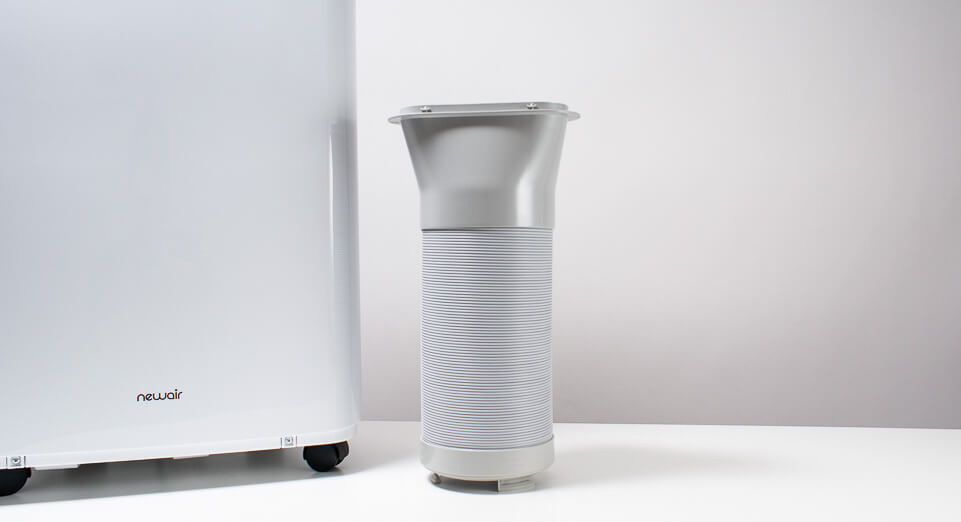
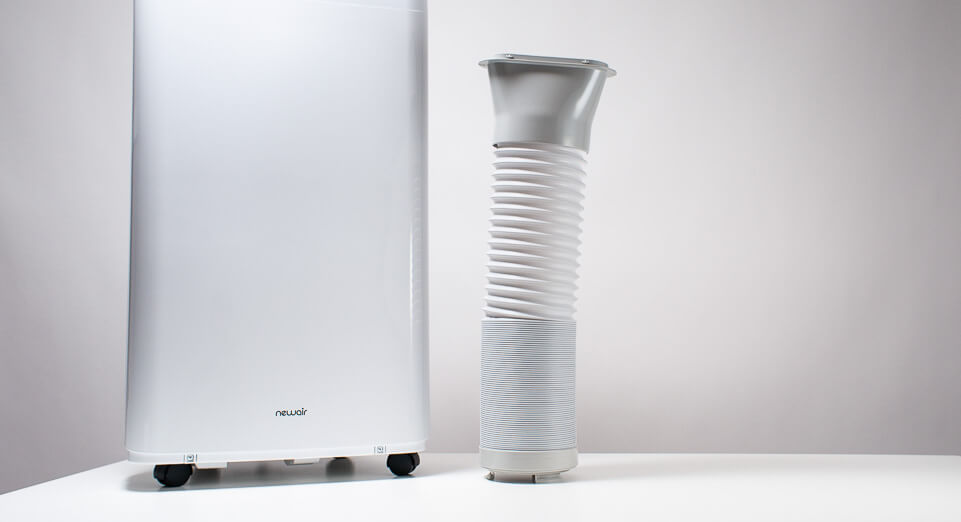
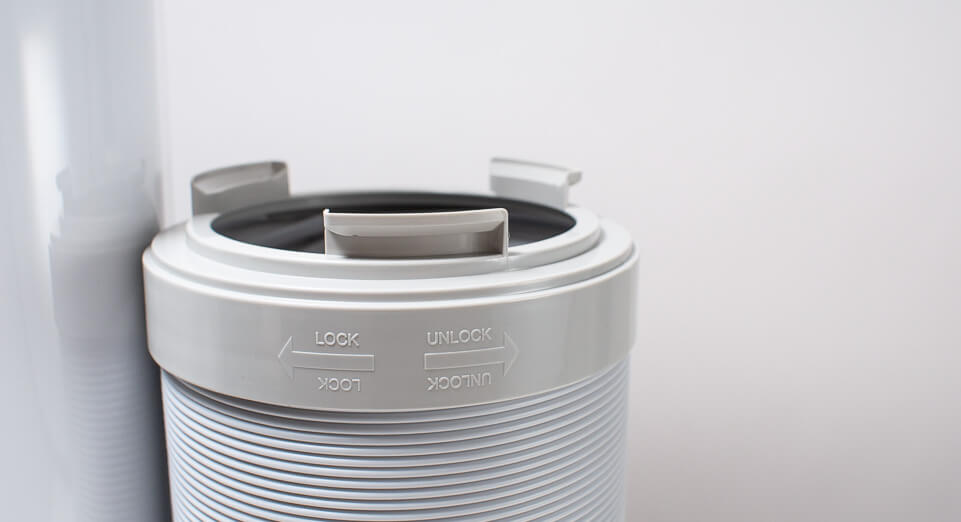
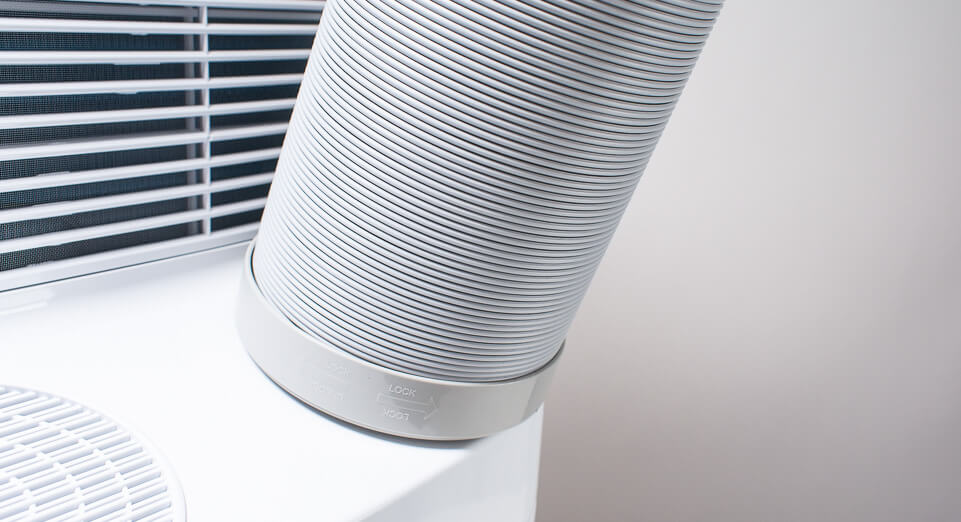
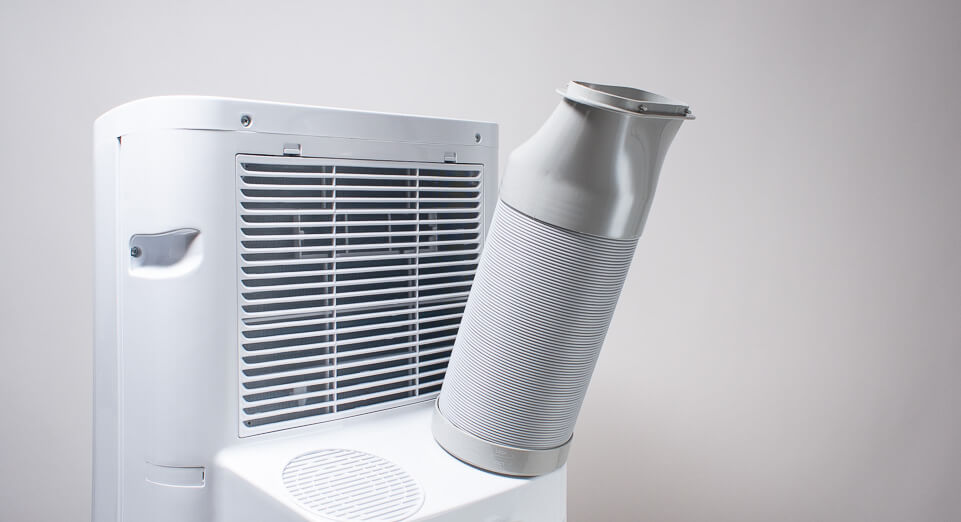
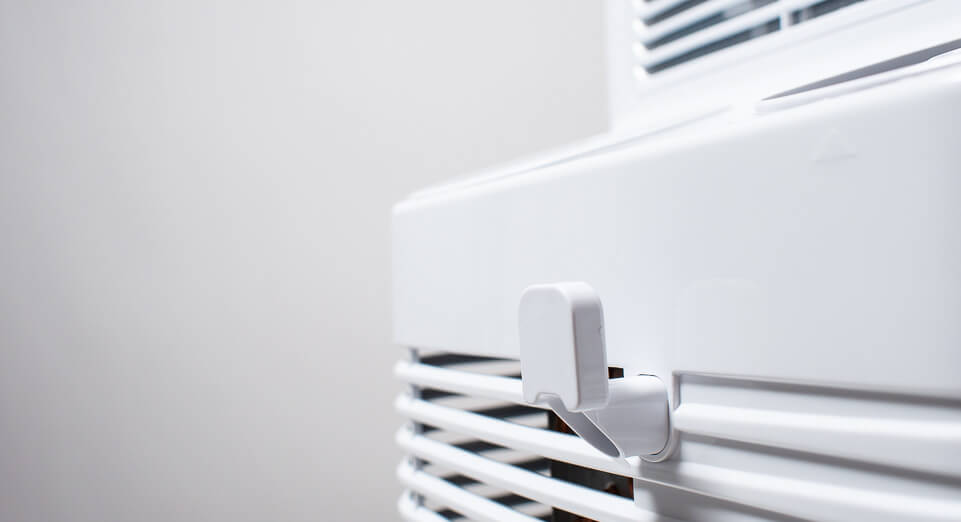
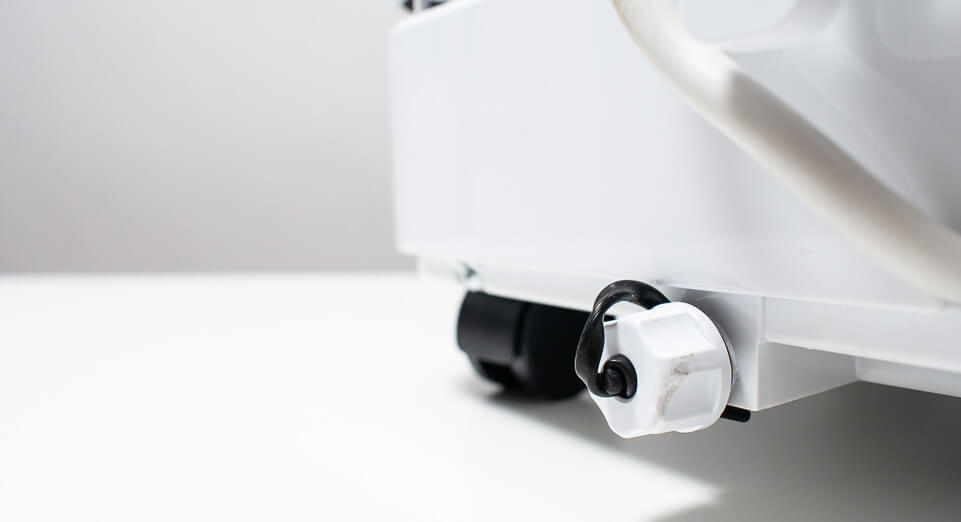
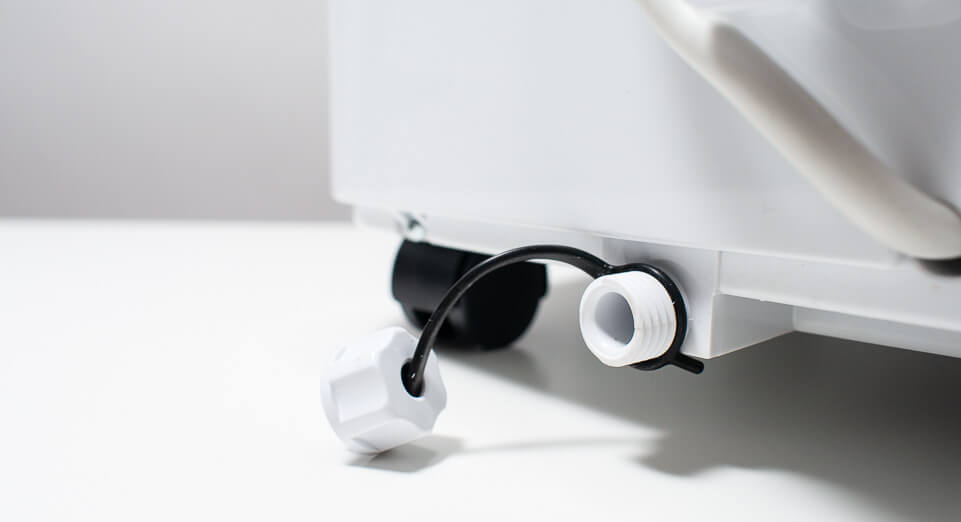
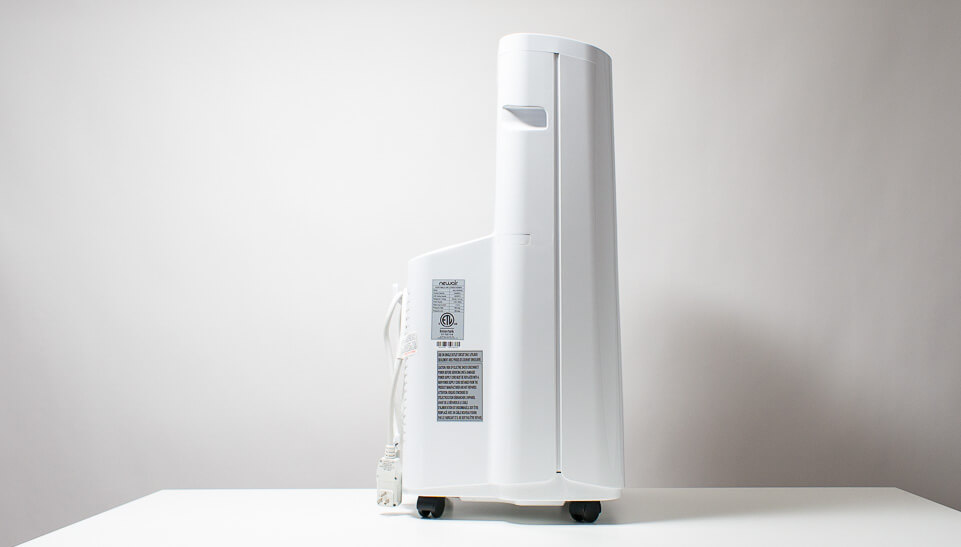
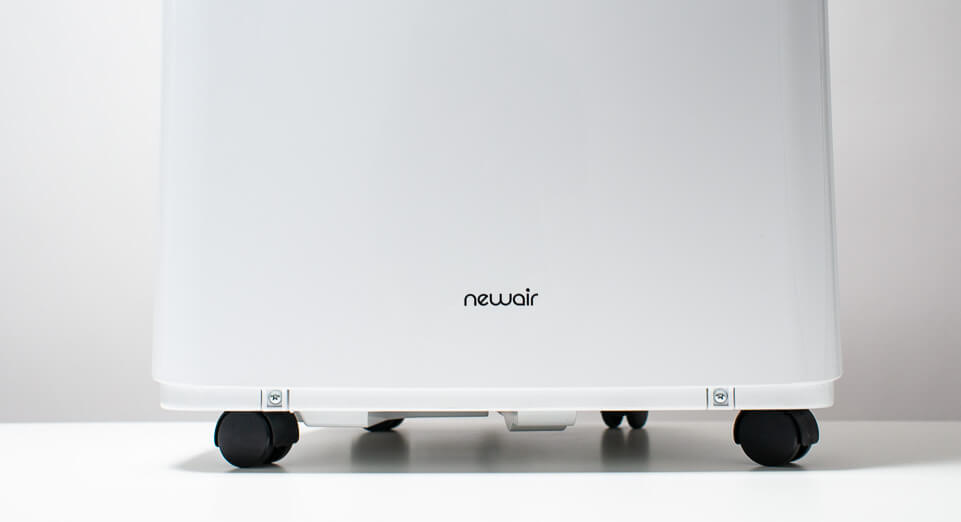
Conclusion
The NewAir NAC14KWH02 is the second best portable air conditioner on the market.
The LG LP1419IVSM is the best.
The LG
- Has a slightly higher SACC
- Offers slightly better energy efficiency because of its higher SACC
- Has a more versatile window kit – for easier installation in a higher number of different windows
- Is more durable – appears to be slightly better built and doesn’t have a window kit toggle switch that can break over time
Otherwise, the NAC14KWH02 is a very good second option.
Both the LG and NewAir and really all units on market
- Have approx. the same noise output - approx. 60 dB at 2 ft. and approx. 55 dB at 10 ft.
- The same modes/feature set – although the LG does allow you to turn off the control panel lights while the NewAir does not
- Almost all portable AC units come with a remote
- All portable AC units are large and heavy – about 2.5 to 3 ft tall and between 50 and 70 lb. The NewAir is 32” tall and weighs about 70 lb.
It all comes down to this
What separates the NewAir and LG from the pack is each unit’s well above average seasonally adjusted cooling capacity (SACC). The NewAir’s 9,500 BTUs of SACC is second highest among all portable AC units on the market.
And this high of a SACC is absolutely critical if you wish to use it in
- Rooms that are as large or larger than 150 sq. ft. and
- Rooms that are difficult to cool – i.e. second story rooms, rooms with a lot of windows, etc.
Even in
- Smaller rooms and
- Rooms that are not as difficult to cool
A 9,000+ BTU (SACC) unit like the NewAir is recommended. It will cool the room much faster and be able to get to and maintain lower temperatures with much less difficulty than a sub 9,000 BTU (SACC) unit.
Yes, we understand that these recommendations contradict conventional recommendations by other consumer publications and manufacturers alike.
But we cannot overstate just how important it is getting as high of a SACC portable AC unit as you can afford.
These are inherently inefficient, underpowered appliances. And you can be guaranteed that a low SACC unit will struggle in even medium sized rooms and at reasonably moderate temperatures.
Buying either the LG LP1419IVSM or NewAir NAC14KWH02 gives you the best chance to overcome the major inefficiencies of portable AC units and actually be able to cool most rooms under most conditions as well as you possibly can.
Additional specifications and notes
Window Kit
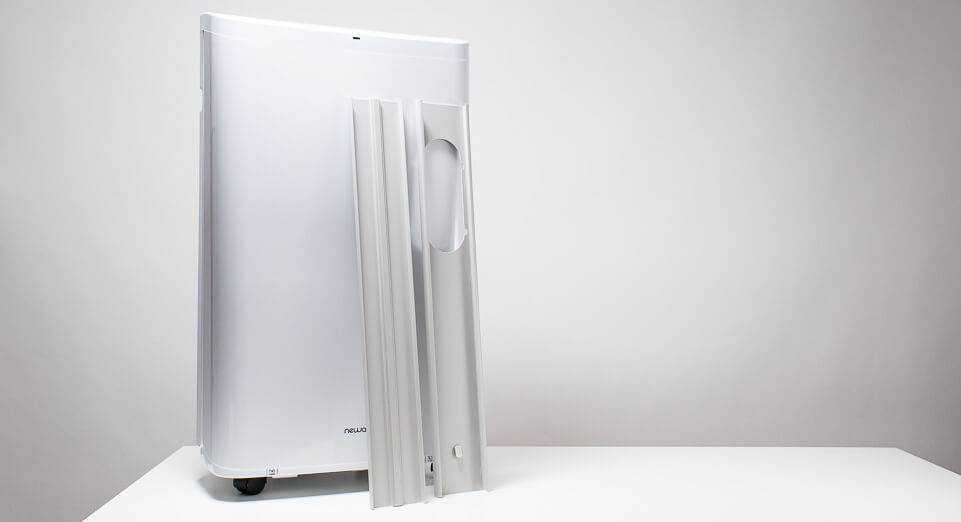
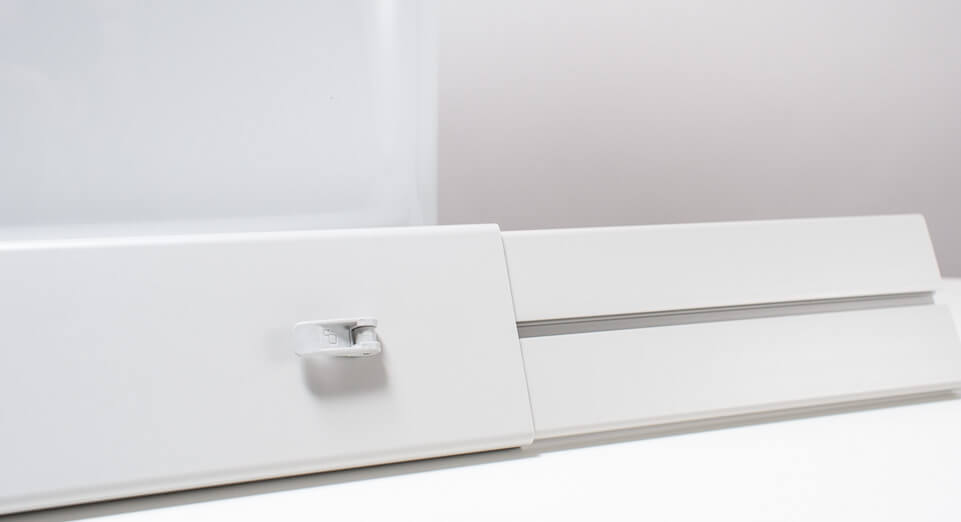
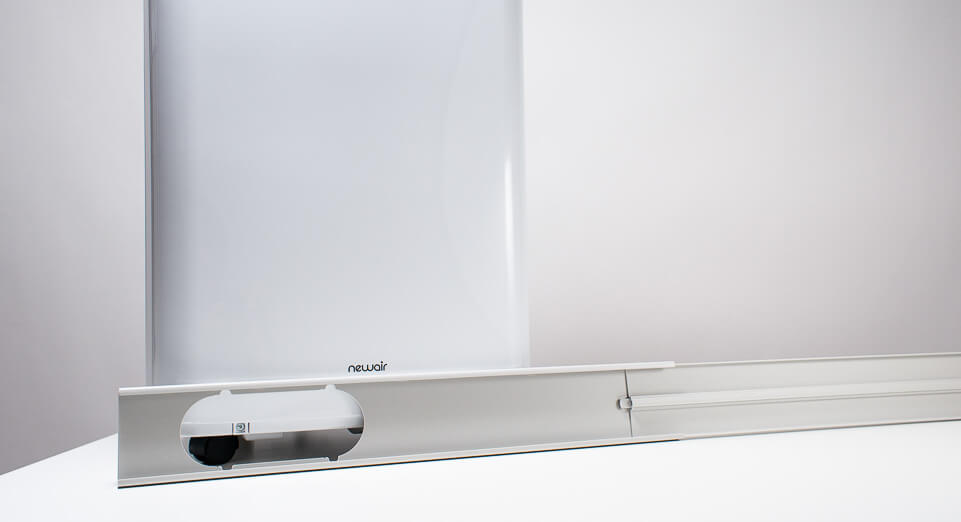
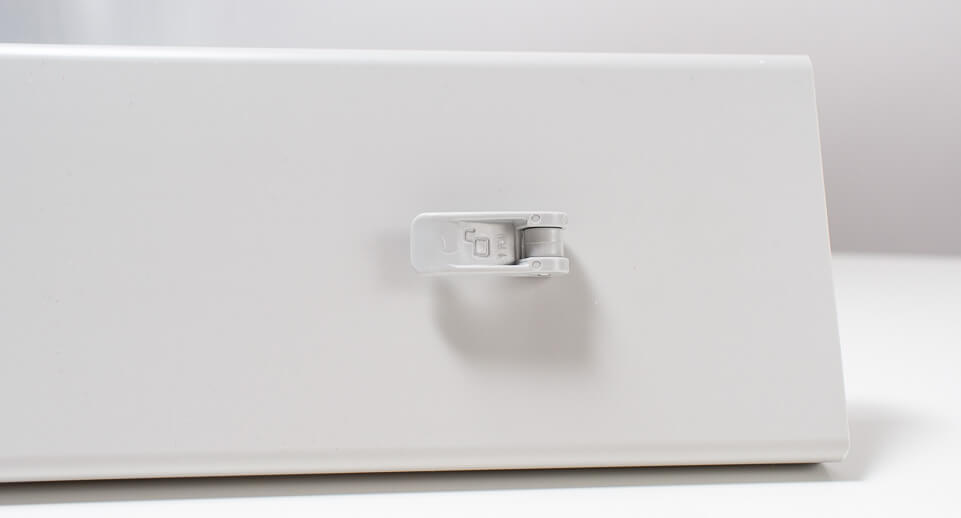
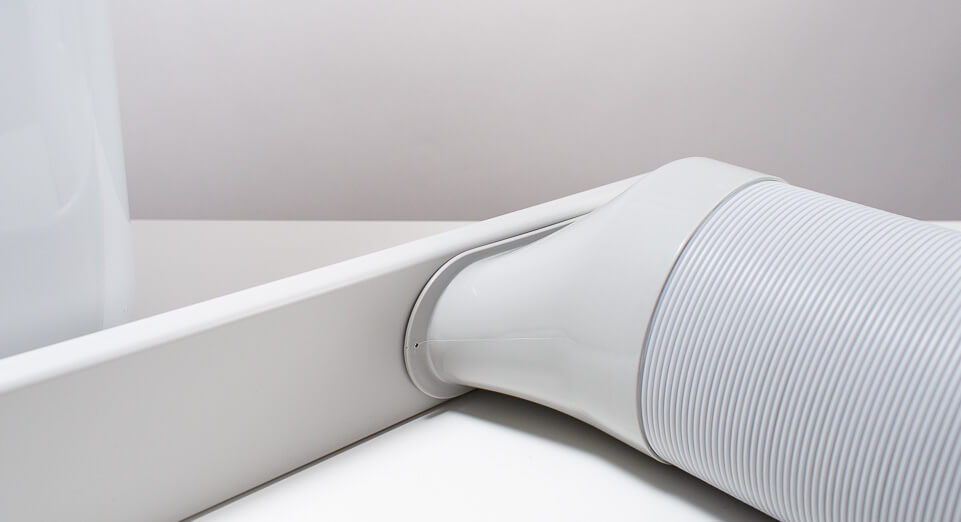
Window Kit Included Parts – window bracket + single extension
Window Kit Adjustment – unique toggle switch locking mechanism
Window Kit Min - 26.5"
Window Kit Max - 50 3/16" with lock mechanism securing extension; 52.5" with extension just sitting in original bracket (not secured at all)
Weather stripping included – none
Notes
As we talked about in the “cons” for this unit, the primary window bracket for the NewAir is long – 26.5” – compared to the length of brackets included with other models. The LG LP1419IVSM’s bracket, for example, is only 23” long.
You can cut the bracket to a shorter length using a hacksaw (or similar saw), but for toolless installation, the window opening has to be 26.5” or wider/taller should you purchase this NewAir unit.
Another negative for this unit is the fact that it doesn’t come with any weather stripping. Other units, like the LG LP1419IVSM, come with a complete weather stripping kit. This kit includes weather stripping in different widths/lengths to insulate around the window kit bracket and the window. Again, the NewAir doesn’t come with any weather stripping so you’ll have to buy some separately if you want to improve the seal around its window bracket.
Hose Connectors
End Adapters – pre-installed
AC Side Hose Connection - AC side needs to go in and turn counterclockwise (difficult to do first few tries but then gets easier once you figure it out)
Window Kit Side Hose Connection - window side goes forward and then to left or right into window bracket - single screw screwed directly into plastic to secure
Hose Min/Max – 16.5” to 62”
Notes
Much here is par for the course when it comes to the NAC14KWH02. It’s hose is just about as long as the hose included with most other models. Its hose is installed in much the same way as well.
Control
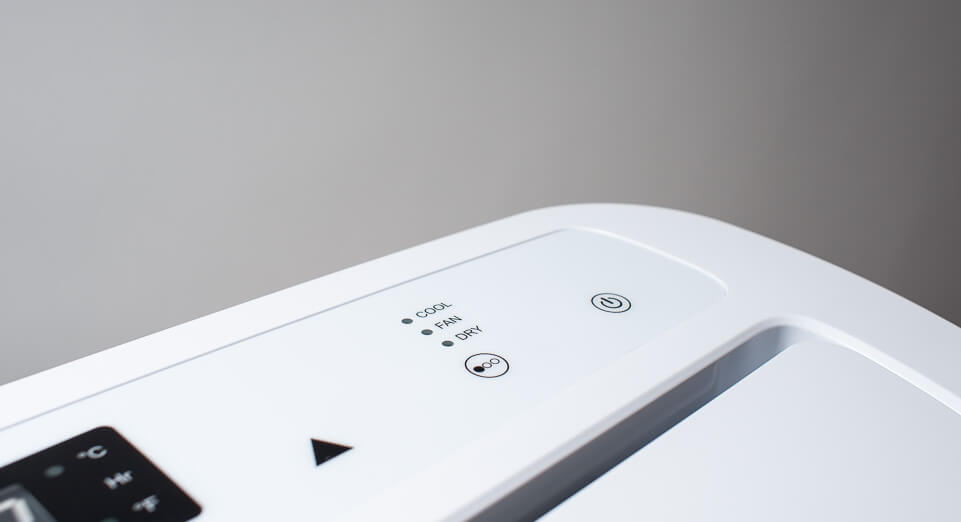
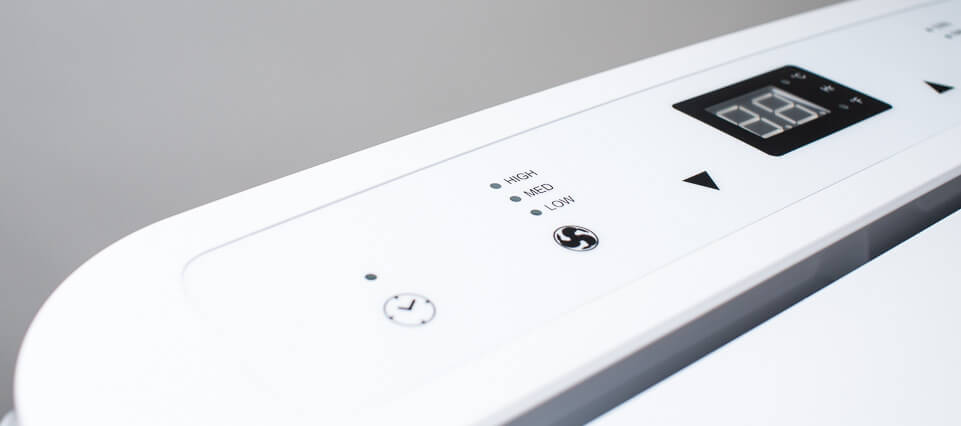
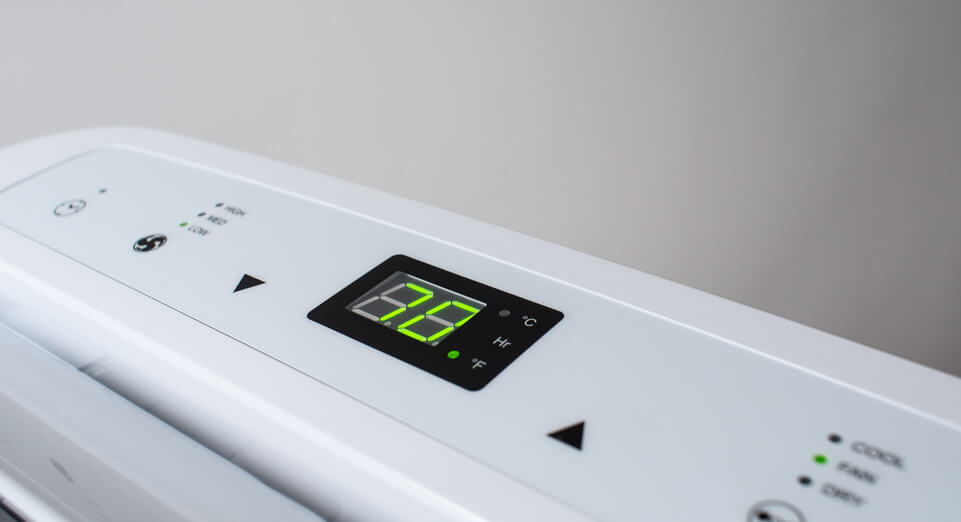
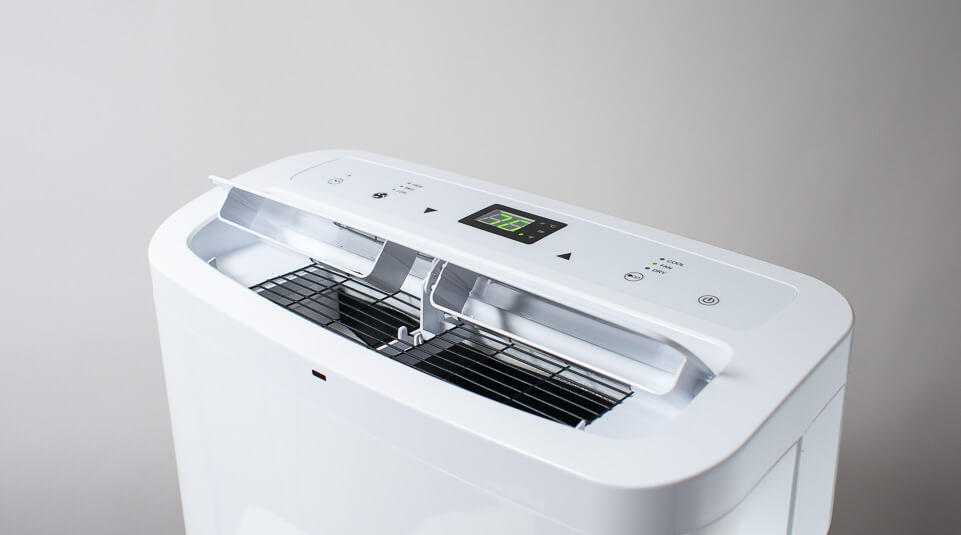
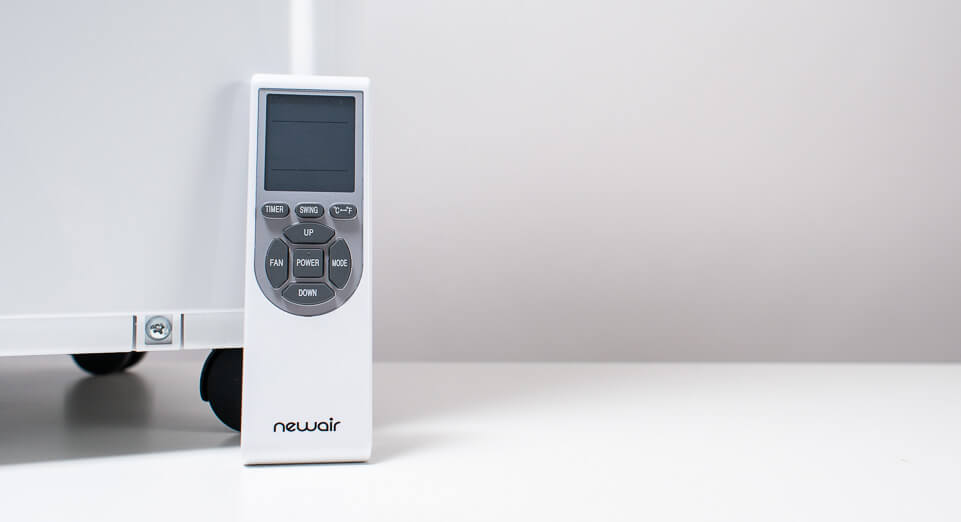
Modes – cool, fan, dry
Set temp range - 60 to 86° F
Fan speeds - 3
Timer - 1 to 24 hr in 1 hr increments
Lights turn off - no
Notes
Again, the feature set here is much the same as it is for most other portable AC units on the market. It is noteworthy that the LP1419IVSM is the one unit we tested that gives you the option to turn off control panel lights.
Condensate
Dry mode pints/day – 117 pints/day
Drainage options - single drain plug at bottom
Drain hose – none; no mention of being able to connect garden hose
Notes
All portable AC units can be used as dehumidifiers in “dry” mode.
The NewAir NAC14KWH02 can remove a whopping 117 pints of moisture per day on this mode. For comparison, the LG LP1419IVSM is again the best in class with a rated capacity of 163 pints/day. Most other 14,000 BTU units are in the 70 to 100 pint/day range. Lower BTU units (8,000, 10,000, 12,000) are in the 50 to 70 pint/day range.
Filters
Top filter (evaporator) - air filter glued to grille - so you just take out whole grille and clean whole grille
Bottom filter (condenser) - no air filter at bottom - just a grille and it's not removable
Notes
Another negative for the NAC14KWH02 is the fact that it lacks an air filter for its condenser (most other units do come with an air filter in this location).
Will this affect long term durability? It’s highly unlikely. Unlike the condenser side of a central air conditioning system that’s outside and pulls in outdoor air to cool it, the condenser side of this portable AC unit is indoors and pulls in much cleaner indoor air to cool it.
Nonetheless, the lack of an air filter in this location is noteworthy, if only for the fact that most other models do have an air filter in the same location.
Add a Comment
Have a question or comment? Let us know below.

Comments (3)
what is the exhaust hose size?
62" long with a 5" diameter.
I've had them all and yes SACC is the most important thing to consider, I almost considered the New Air but yep the lack of a bottom filter is very odd, what else did they skimp on that we CAN'T see?
I've have a 12000 btu low SACC Honeywell Dual Hose air conditioner AND A 8000 btu single hose I have never noticed a big difference between my single in the bedroom and dual in the
living room, except the single does seem like a crisper cool.
I'm actually going back to a single only
for the Daul Inverter technology..
You guys are the best. Your reviews speak for themselves. Thank you thank you.